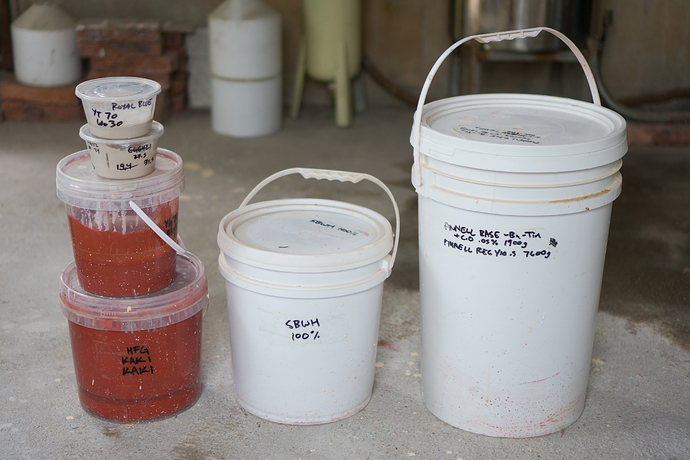This topic should explain how to start out mixing your own glazes
Equipment you will need
Kiln
Your kiln type will determine at which temperatures and atmospheres you can fire glazes.
- Most potters use electric kilns and fire mid-range temperature in an oxidation atmosphere. If you have just purchased an electric kiln and do not know which temperature to use, just start out with the most popular temperature of Orton Cone 6.
- If you work in a community studio you may have access to high-temperature firings in either reduction or oxidation atmospheres. Check with your studio technician and verify the exact Orton Cone they fire to.
Cones
Orton Cones measure heatwork. More information about cones here. To be added. Once you have decided what temperature you will be firing to, you should buy three sets of cones. For example, if you fire to Orton Cone 6 you should also use Orton Cone 5 (a warning cone) and Orton Cone 7 (a guard cone).
Dust mask
You MUST wear an OSHA-approved mask at all times when working with dry glaze materials and spraying glazes. Your mask should only be removed when all materials in your glaze batch are fully soaked in water. For more information, see Studio Dust by Mark Goldberg
Scales
Sieves
Containers
It’s preferable to have a number of different containers for different batch sizes. The name of the glaze and ideally the full recipe and batch size should be written on the container. Glaze notes like best specific gravity for application can also be added. Rather than writing directly on the bucket, attach tape or a tag and write on that. If you only write information on the bucket lids you will be guaranteed at some point to accidentally mix up glazes…
Water
Base Materials
Base materials make up the bulk of the glaze, and therefore you will need to purchase larger quantities of these ingredients…
Mid-fire Basic Base Materials
- Neph Sy
- Whiting
- Flint/Silica
- Kaolin (EPK)
- Frit 3124 or Gerstley Borate
High-fire Basic Base Materials
- Potash or Neph Sye.
- Silica. Describe here
- Kaolin. Describe here
- Whiting. Describe here
Example glazes you can make with these ingredients:
https://glazy.org/recipes/2878
https://glazy.org/recipes/338
The second round of materials would be Potash Fledspar, Talc, Strontium Carb, Barium Carb, Zinc Oxide, Manganese, Nickle
Additional Materials: Colorants and Opacifiers
Colorants and opacifiers are usually added in addition to a glaze’s base materials. You can purchase these materials in much smaller quantities, even just a hundred grams will last a long time if you are making small batches of glaze tests.
- Iron: Red Iron Oxide
- Cobalt: Cobalt Carb.
- Copper: Copper Carb
- Chrome: Chrome Ox
- Rutile: Rutile and/or Titanium
- Zircopax



